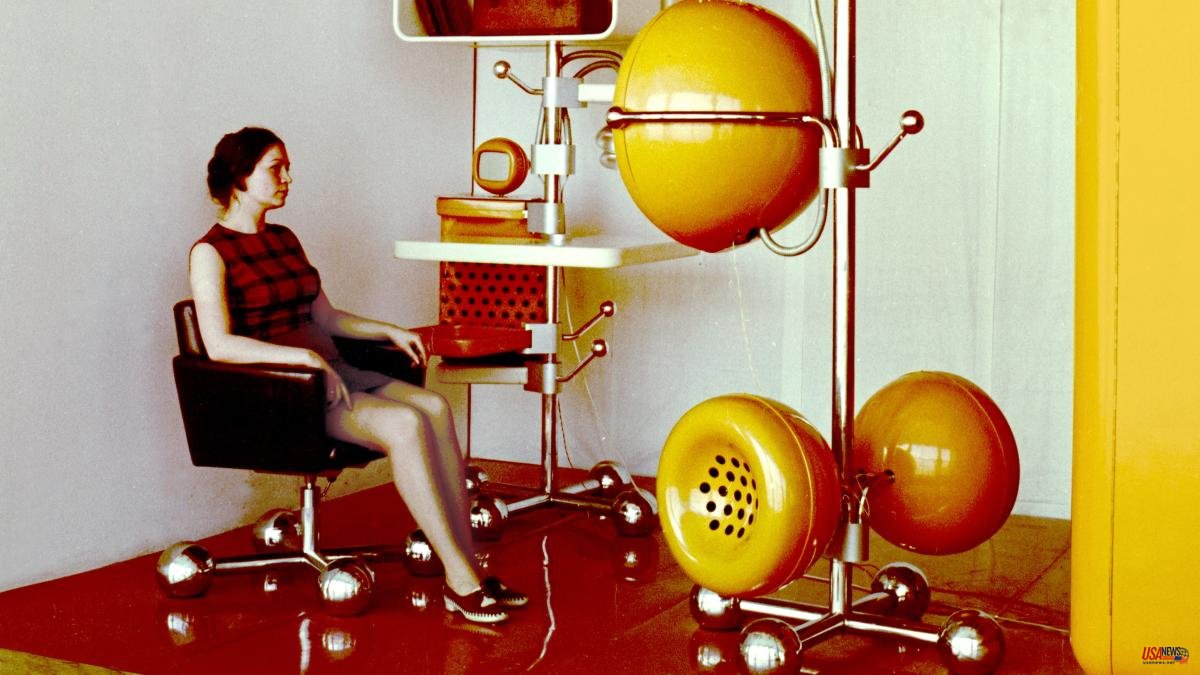In Europe torn by the iron curtain, design and architecture also accused the geopolitical tension between the United States and the Soviet Union as epitomes of their respective spheres of influence, capitalist and communist. Despite everything, architects and designers from both worlds faced similar challenges when it came to conceiving how to furnish homes, plan an airport waiting room or create posters for a fair.
The way in which professionals from the Soviet sphere did it is the crux of a suggestive exhibition in Berlin, organized by the Museum of Decorative Arts (Kunstgewerbemuseum) with a team of curators and museums from various countries who, by the winds of history, They were under the control of the USSR. The reflected temporal arc goes from the fifties to the eighties. The Berlin Wall fell in 1989.
The very title of the exhibition, which can be visited until July 16, is significant: Retrotopia. Design for socialist spaces. At the same time that he uses a neologism to retrospectively evoke the utopian elements that were in those works, sketches or prototypes, he chooses to describe the spaces as socialist, as the majority of the dominant parties in the Eastern countries called themselves, which avoided the word communist.
Structured in rooms, one per country, the exhibition displays concepts, furniture and objects for interior, public and private spaces. “Both in the West, in the Soviet bloc and in Yugoslavia, the development of urban districts led to exhibitions on ideal house models, new types of furniture and technologies for the home”, explains the German Claudia Banz, a specialist at the Kunstgewerbemuseum. Many of the projects exhibited now in Berlin did not go beyond the stage of experimentation and development of prototypes in their day; others did come to fruition.
As a multi-authored exhibition, the itinerary covers works from East Germany, Croatia, Slovakia, Slovenia, Estonia, Hungary, Lithuania, Poland, the Czech Republic, Russia and Ukraine. The Russian invasion of the latter country and the ongoing war since February 2022 marked the show from the beginning. The two Kyiv museums involved were roundly opposed to Russian participation, but the driving German institution insisted, and finally there is a stay on Russia, although it is the work of an independent curator, based in Berlin and not linked to the Muscovite regime.
“The war has influenced the selection of ideas,” says Polina Baitsym, one of the two Ukrainian curators. I have chosen to show some stained glass windows typical of public buildings between the fifties and eighties. One is from a Bucha sanatorium, which in this war was used by the Russians for torture. So this is also a conversation about spaces in time, about how they become witnesses to events." Baitsym endorsed the Russian curator, Alyona Sokolnikova, saying that "her approach to the issues is very critical."
The exhibition does not fall into the so-called Ostalgie (nostalgia for the East), a form of friendly memory of life in the German Democratic Republic (GDR) that is reflected above all in the commercial and tourist use of products and designs of the time, such as the merchandising around the Ampelmann (the little red, amber and green man of traffic lights) or the cult of the Trabant, the small car typical of Eastern countries. The Ostalgie is criticized because it avoids addressing the dictatorial nature of those regimes. However, there is in this exhibition a desire for cultural vindication. “The reality is that in the old socialist countries there was design –says Claudia Banz–. Because there is also the Western prejudice that there was nothing there, that it was just a scarcity economy, that everything was gray and monotonous, and here we dismantle that prejudice”.
An illustrative observation: in the countries of the East, women worked in the most diverse trades and state day-care centers abounded, but the design, as can be seen in the exhibition, continued to place them in charge of the home.
It is also interesting to discover how, in practice, designers from Western and Eastern Europe maintained exchanges during those years, through exhibitions, congresses, workshops and symposia, or industry publications and personal contacts through the net. artistic. Paraphrasing the expression Iron Curtain (iron curtain), the Hungarian historian György Péteri coined the concept of Nylon Curtain, to allude to the porosity between both antagonistic blocs that allowed some cooperation and exchange during the cold war in some cultural spheres, as in this case.
The organizers also consider that the Retrotopia exhibition also contributes to the necessary process of decolonization of design styles marked by Russia's dominance over its then satellite countries, which now want, for obvious reasons, to reinterpret their past in a democratic light.
Retrotopia. Design for socialist spaces. Museum of Decorative Arts (Kunstgewerbemuseum), Berlin. Until July 16













